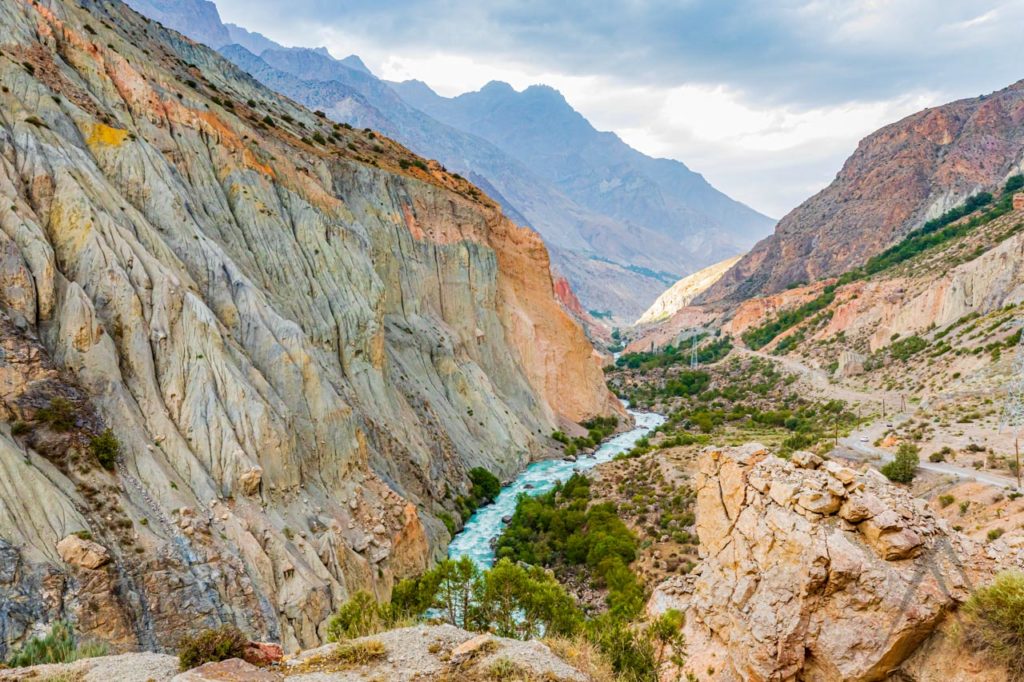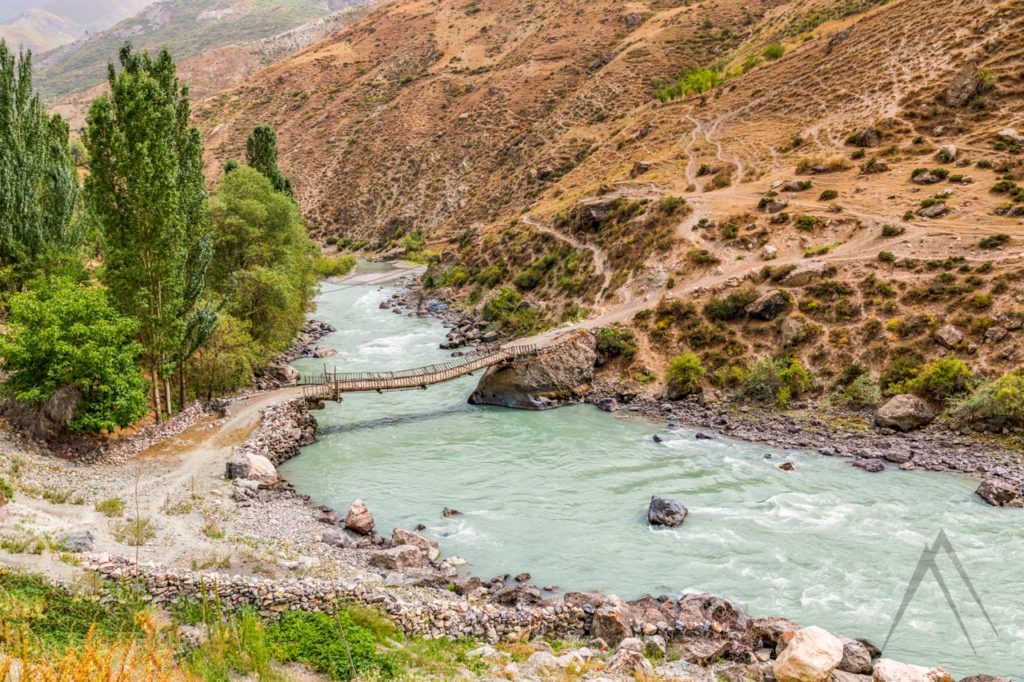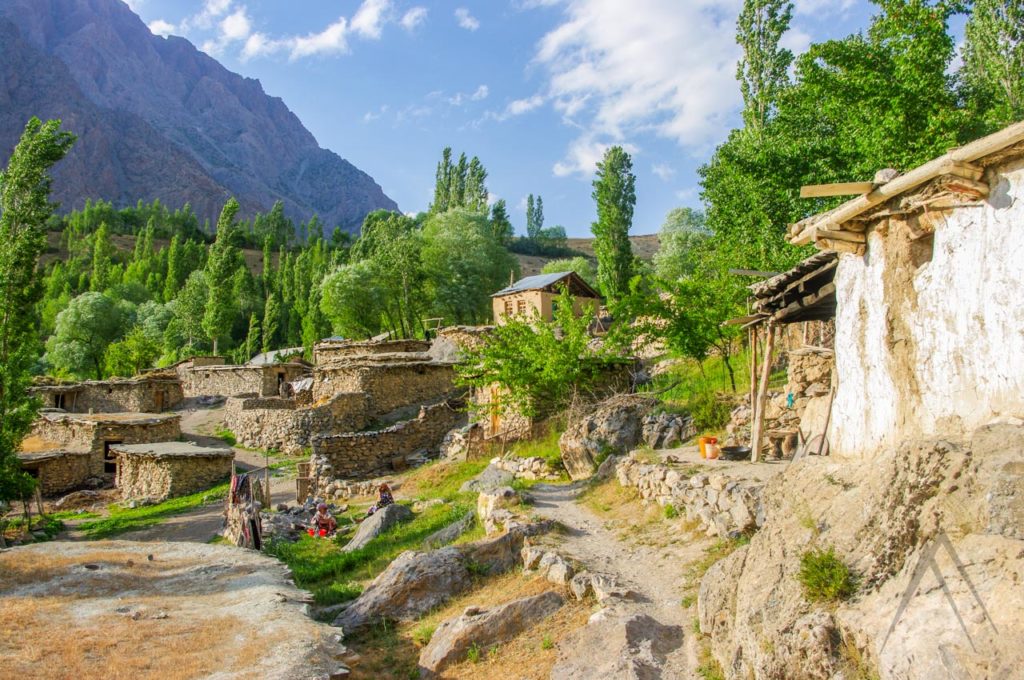Yagnob Valley
Yagnob Valley
Yagnob (or Yaghnob) valley is located in the North-Western Tajikistan, between the southern slope of the Zarafshan Range and the northern slope of the Gissar Range. It is a very remote and little-visited mountain valley towards east, southeast from Ayni village but really one of the most attractive and interesting valleys in Tajikistan even though it is actually less than 150 km away from Dushanbe. The valley has been formed by the Yagnob River and is a part of the Zarafshan basin.
Yagnob valley was almost inaccessible until a road was blasted out by the Russians. Before that it was only accessible on foot when the weather allowed. Yagnob valley is elevated between 2500 and 3000 meters above sea level and remains to be one of Tajikistan’s most wild, unspoiled spots and a fascinating anthropological micro cosmos. The Yagnob river runs through an amazingly beautiful but at the same time hard to access gorge and the cliffs guarding the access against the main valley ensured it was a place of refuge for people escaping invasion. This means that the upper parts of the valley are still inaccessible for six months a year due to snow and rockfalls and it is therefore best to visit the valley between June and September.
The Yaghnob valley is an ideal trekking location, with good paths, mountains on both sides rising to the skies and all the way up to the 5000 m peak of Qullai Samarqand at the end of the valley. There are trekking routes across the ranges to valleys leading all the way down to Dushanbe to the south and the upper Zarafshan valley to the north. There are several fascinating shrines to be discovered in the remote hidden locations. The Yagnob Valley to the south is the narrower and wilder of the two forks of the valley but yet closer to Dushanbe. The upper valley is famous as the last home of several hundred people that are native speakers of the Sogdian language, the last echo of a language largely unchanged since the time of Alexander the Great.


Yagnobis
Named “Paradise on Earth” by the residents, the Yagnobi Valley is home to the Yagnobis, the heir of the ancient Sogdians. The Yagnobi people of the Yagnob, Kul and Varzob river valleys are considered as the last remaining speakers of the ancient Sogdian language and the Sogdians’ genetic descendants. They fled to the mountains following the Arab invasion in 772, continuing to practice aspects of their Zoroastrian religion in addition to Islam. It is thought that as many as 25 000 Yagnobis may still survive in Tajikistan, though many of them have now abandoned their traditional way of life or intermarried with other ethnic groups.
Until the 1930s the Yagnobi lived untouched by the modern world, continuing their traditional agriculture as they had done for a millennia. Their first interaction with the Soviets was the Stalinist purges, then forced resettlement in Tajikistan’s lowlands in the 1950s and 1970s. Red Army helicopters evacuated entire villages, apparently to protect them from floods, but then forced the Yagnobi to work in extreme heat on the collective cotton plantations. Villages were razed to prevent their inhabitants from returning, religious books were destroyed and as a final ignominious act, Yagnobian ethnicity was officially abolished. Hundreds of Yagnobi families died in exile.
Since 1983 a small number of Yagnobis have returned to the Yagnob Valley, though many of their villages are still home to only a handful of families. The total permanent Yagnobi population in the valley is about 300 people and rising to 1000 during the summer months.
They live in basic mud-brick dwellings without electricity, scrape a living from subsistence farmings and to the delight of linguists and historians, still keep on speaking the Sogdian tongue.

Sogdian language in Tajikistan
Despite the connection to the outer world, the Sogdian language still perseveres in the Yagnob valley. Not all the here people speak it, but many do. It is estimated there are about 3000 Yagnobi speakers (442 in Yagnob, 1500 in Zafarobad, 400 in Takob, and 500 in Dushanbe). Yagnobi is barely comprehensible to outsiders, even to fellow Tajiks from neighboring valleys and this almost private language has created a special bond through the ancient community.
The Tajik government has been supportive, teaching material has been provided and children are taught either in tiny schools or by peripatetic teachers. There are academics at the Rudaki Institute of Languages and Literature Studies, Dushanbe, who provide written material and encourage the study of Sogdian literature and music.
Other Sights and Destinations near Yagnob Valley
Page updated 15.11.2024